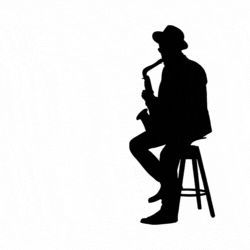
Your shopping cart is currently empty.

Construction
A mouthpiece consists of the rim, cup, throat, and backbore. Bringing these various components into proper relationship constitutes the art of superior mouthpiece production. In choosing a special combination of rim, cup, throat and backbore designs, consider the effects of each.
Rim
Wide: Increases endurance.
Narrow: Improves flexibility, range.
Round: Improves comfort.
Sharp: Increases brilliance, precision of attack.
Cup
Large: Increases volume, control.
Small: Relieves fatigue, weakness.
Deep: Darkens tone, especially in low register.
Shallow: Brightens tone, improves response, especially in high register.
Throat
Large: Increases blowing freedom, volume, tone; sharpens high register (largest sizes also sharpen low register).
Small: Increases resistance, endurance, brilliance; flattens high register.
Backbore
Except in general terms, it isn’t possible to identify backbores by size because they also vary in shape. Various combinations of size and shape make the tone darker or more brilliant, raise or lower the pitch in one or more registers, increase or decrease volume. In each instance, the effect depends in part on the throat and cup used in combination with the backbore.
Model Numbers
Bach trumpet, cornet and fluegelhorn mouthpieces have been numbered in an orderly progression from the largest to the smallest diameters and from the deepest to the most shallow cup, each with a choice of rim designs.
Model numbers progress numerically from model #1 with the largest cup diameter, to model #20C with the smallest cup diameter. Cup depths are notated with letters. “A” cups are the deepest; standard cups have no letter designation; progressively shallower cups are marked B through F.
“A” Models have very deep cups, #24 backbores, and emit a large, dark sound.
Models with no letter designation have deep cups, #10 backbores, and produce a rich, full, clear tone.
“B” Models have medium deep cups, #7 backbores, and have a full, Teutonic tone with great volume.
“C” Models have medium cups, #10 backbores, and are preferred by many players that alternate between B b, C and D trumpet.
“D” Models have medium-shallow cups, #76 backbores, and produce a sparkling, brilliant tone, especially in the high register. Artists who continually play in the extreme high register use them to advantage.
“E” Models have shallow cups, #117 backbores, and are designed for use on soprano and piccolo trumpets. Also preferred by extreme high register players.
“F” Models have extra-shallow cups, #76 backbores, and are also preferred by extreme high register players.
“V” Models have V style cups.
“V” designates a very deep cup, #20 throat, and #25 backbore
“MV” designates a medium deep cup, #25 throat, and #25 backbore
“SV” designates a shallow cup, #25 throat, and #25 backbore.
“W” Models have a wide, cushion rim for soft, thick lips.
[ Return to Bach ]